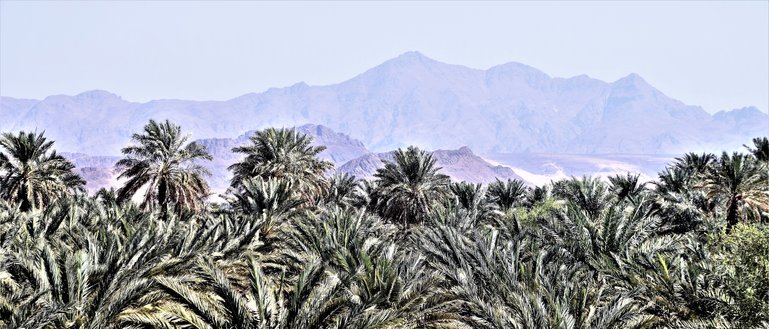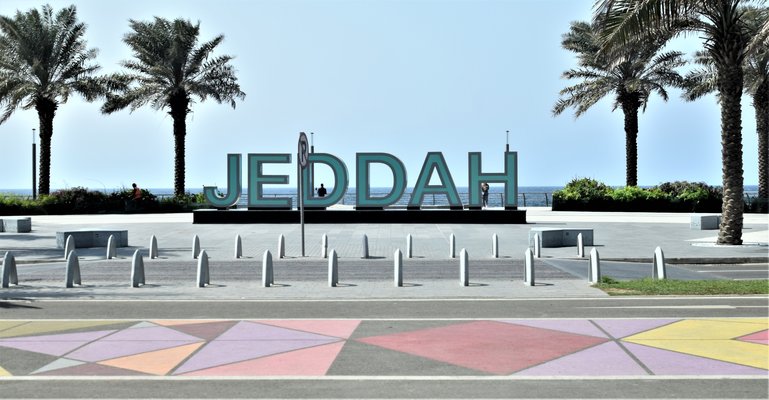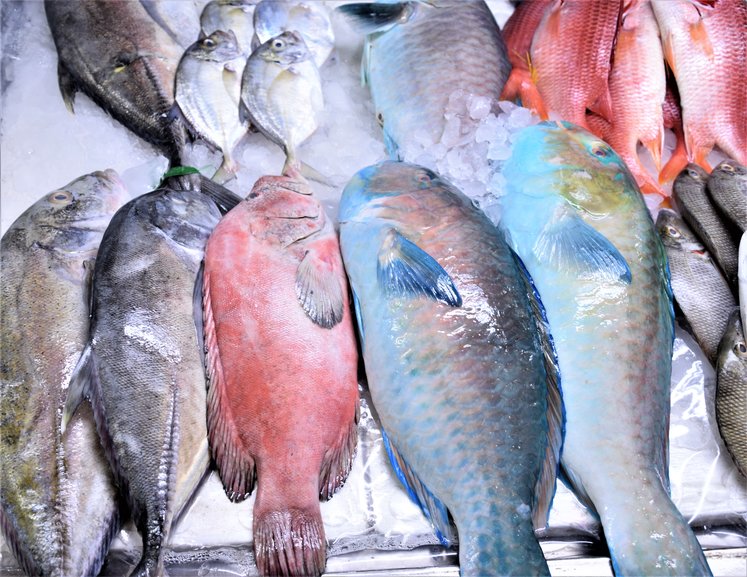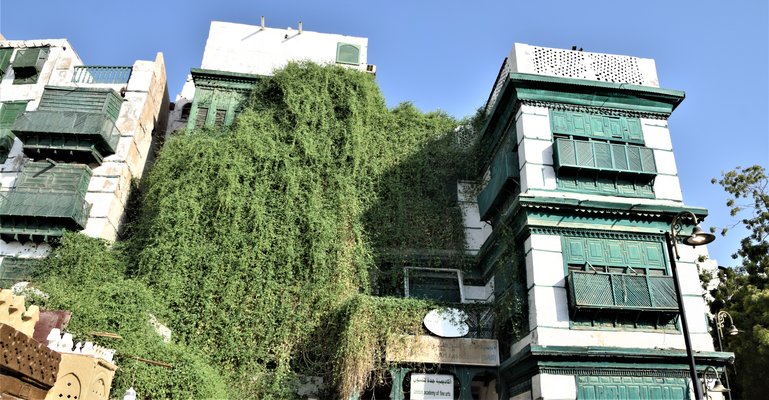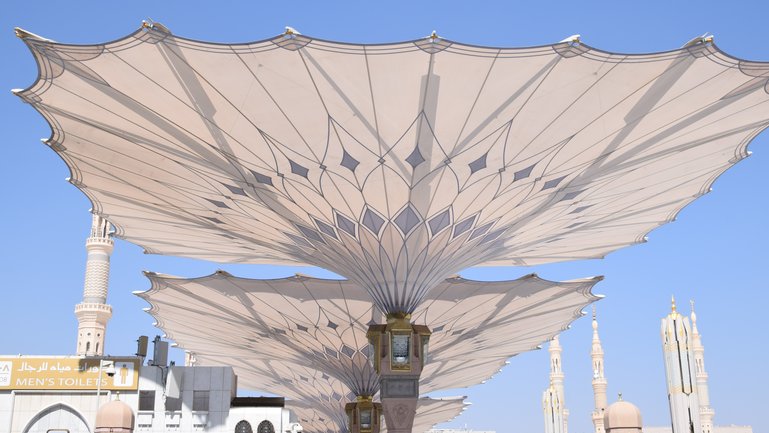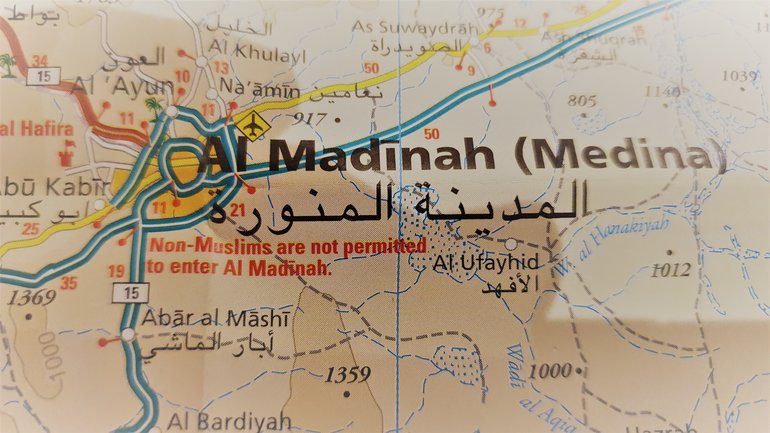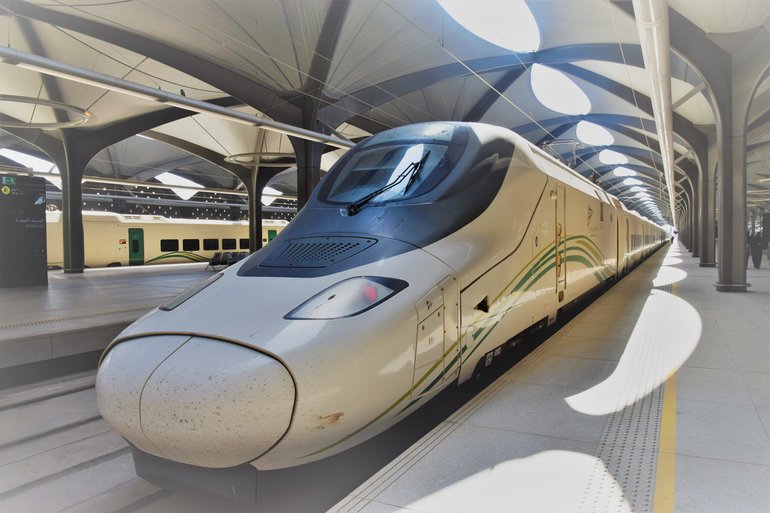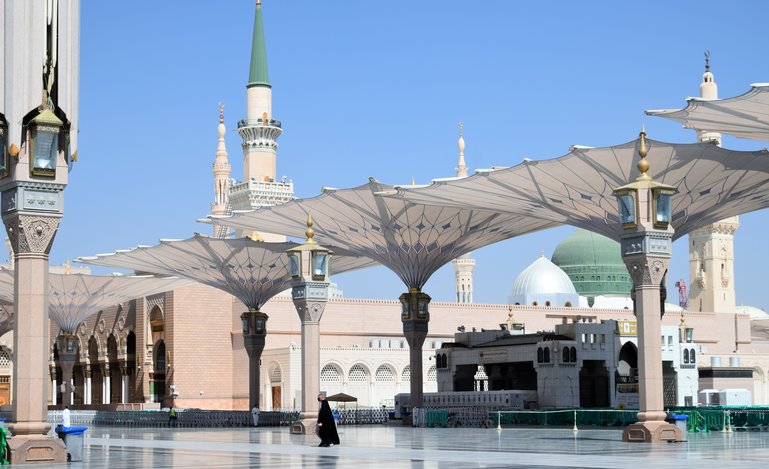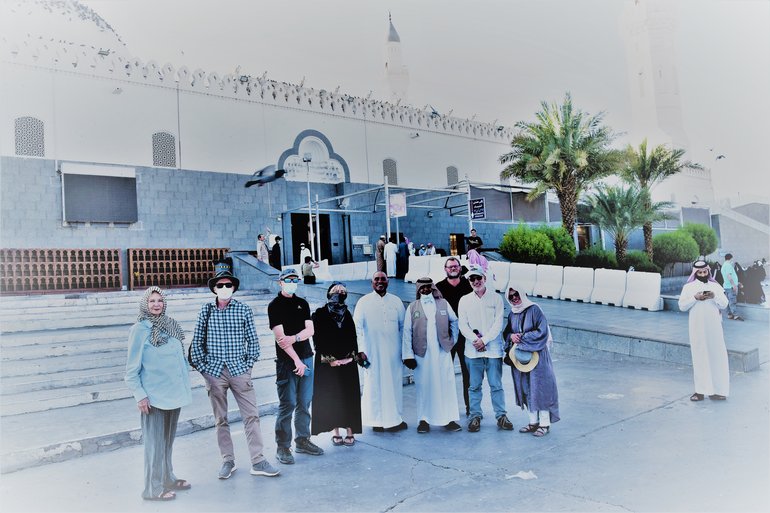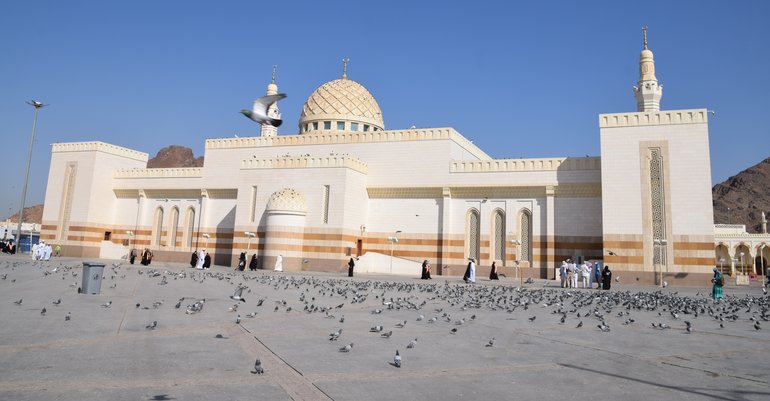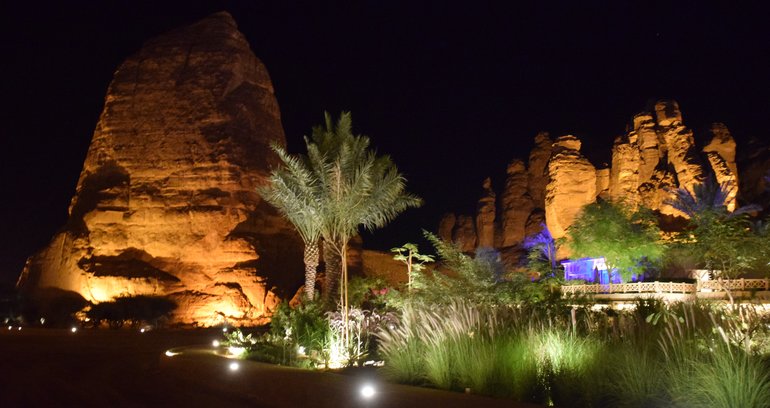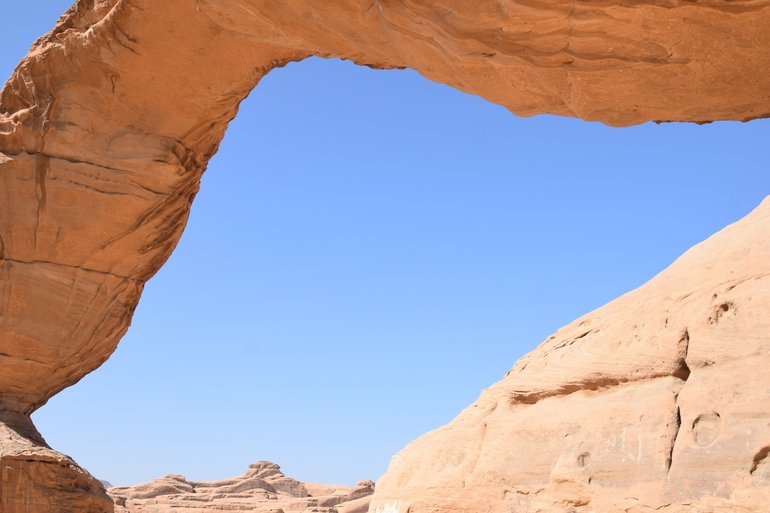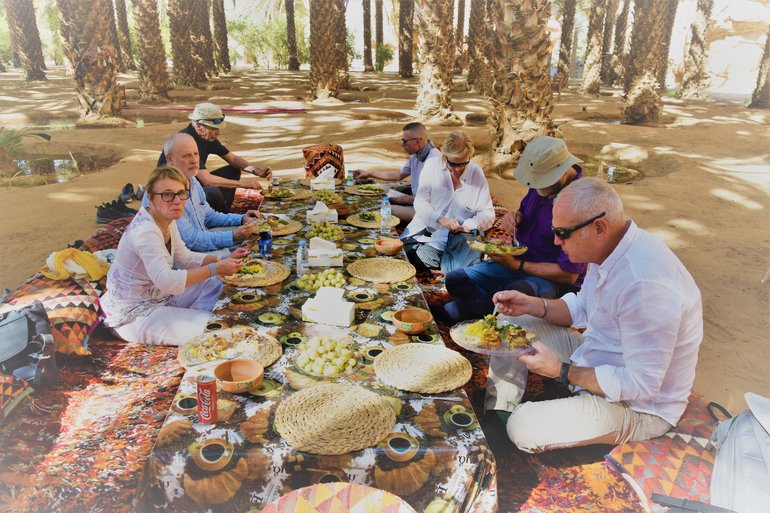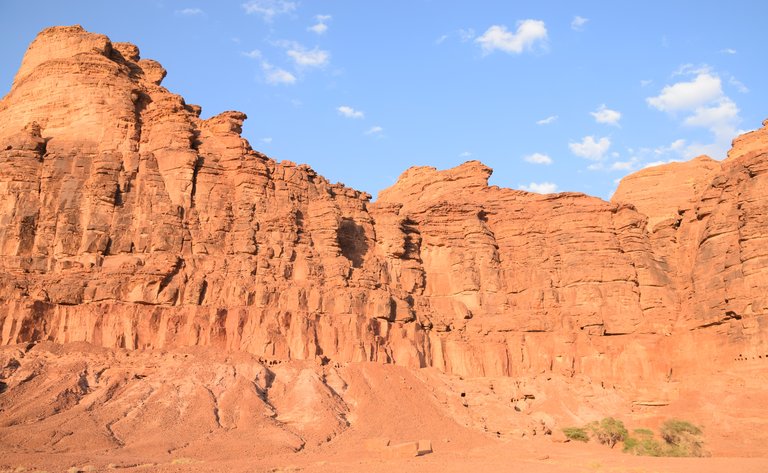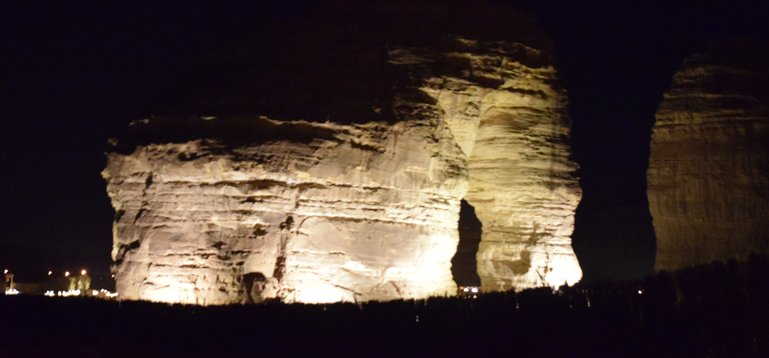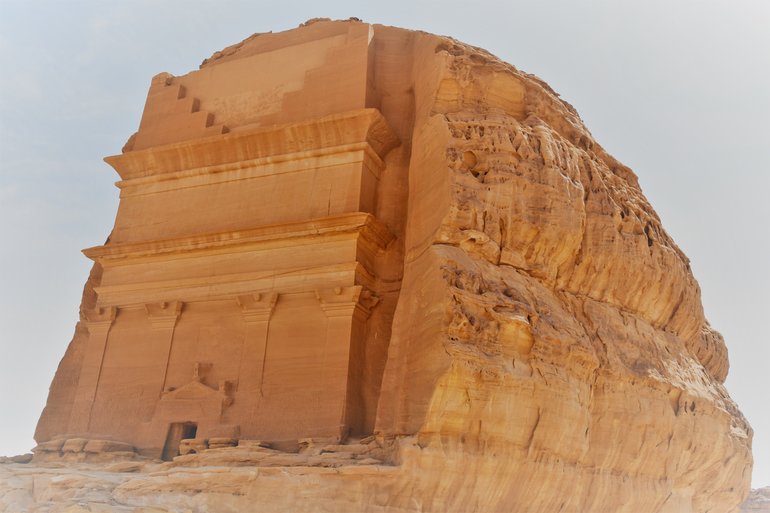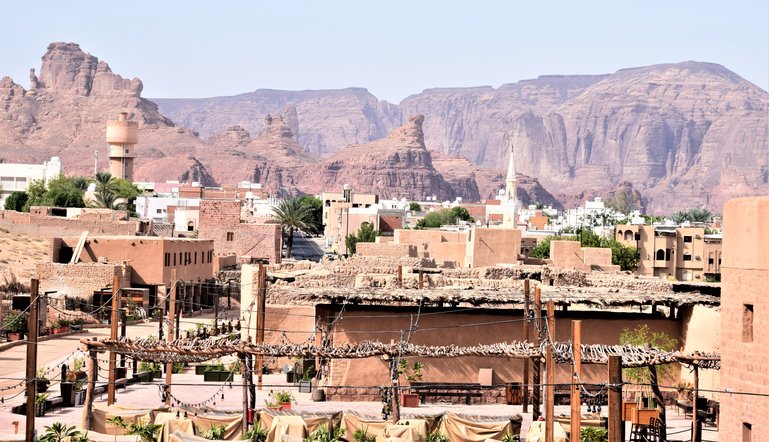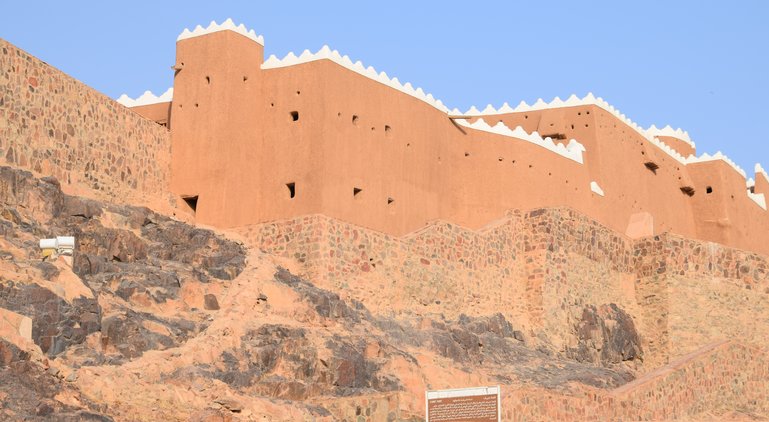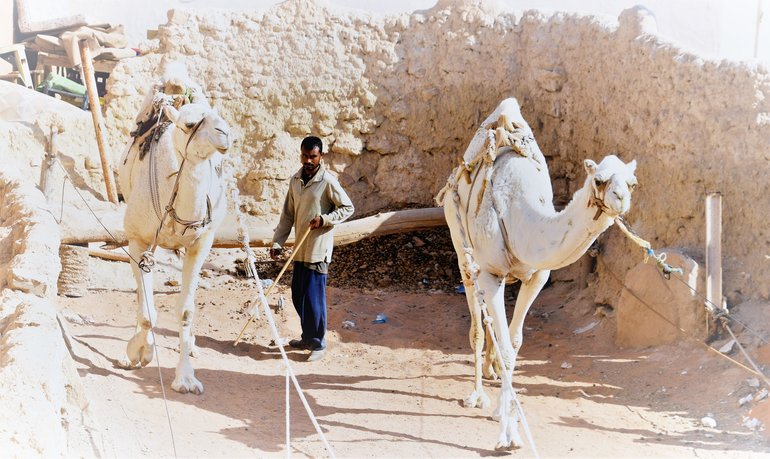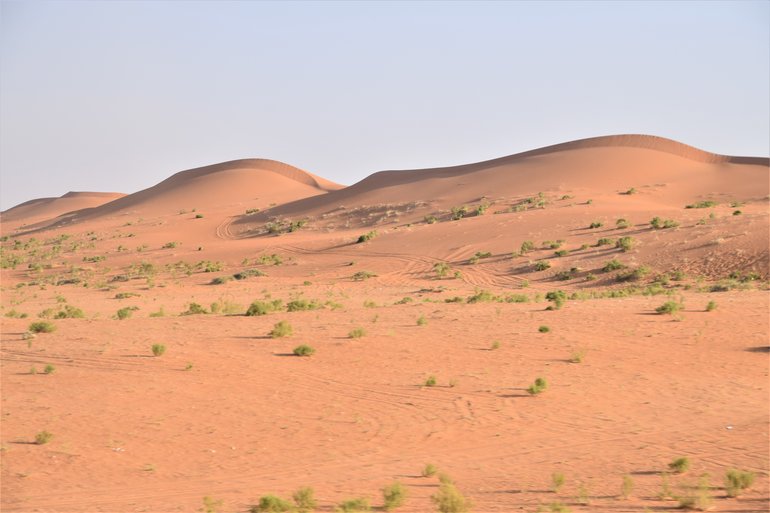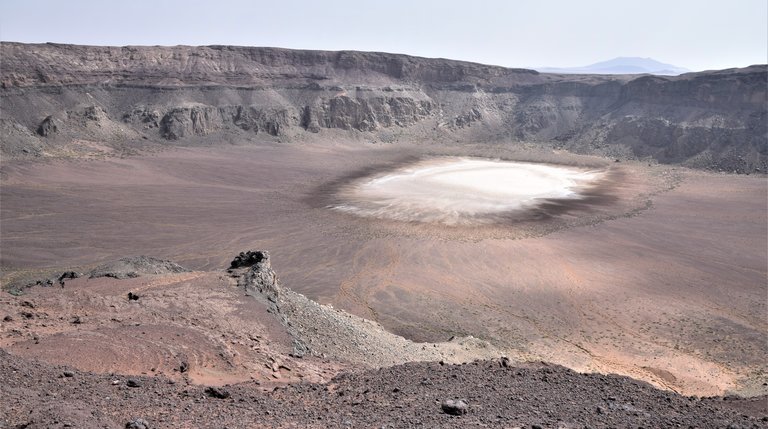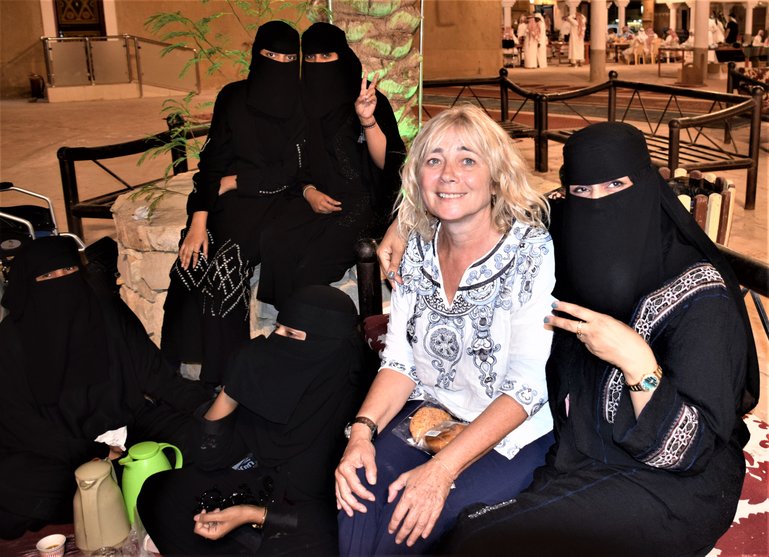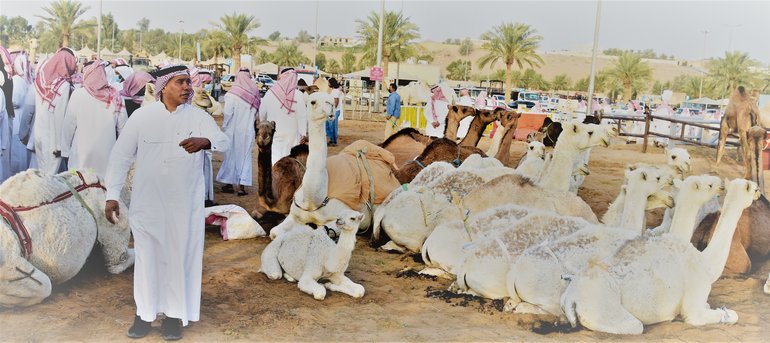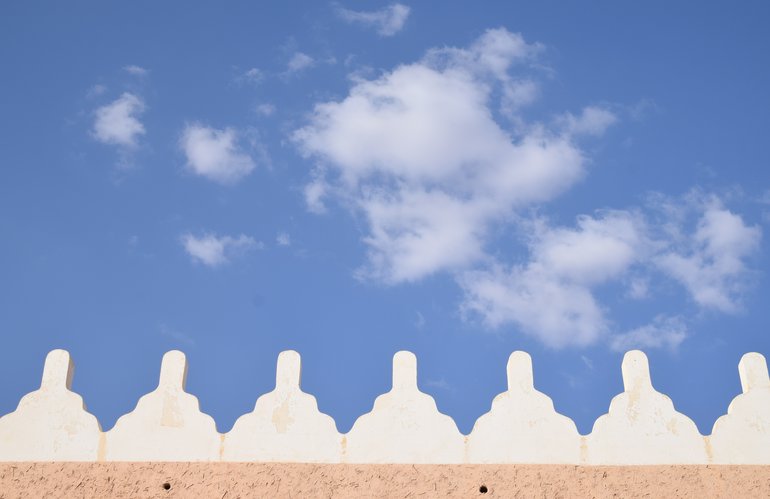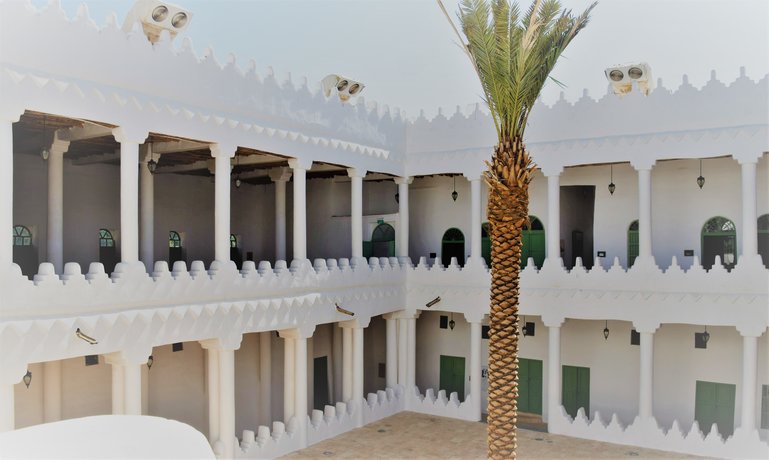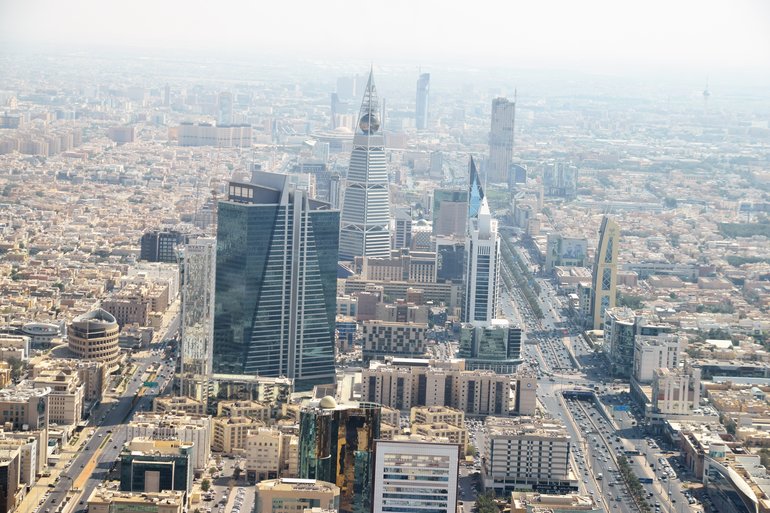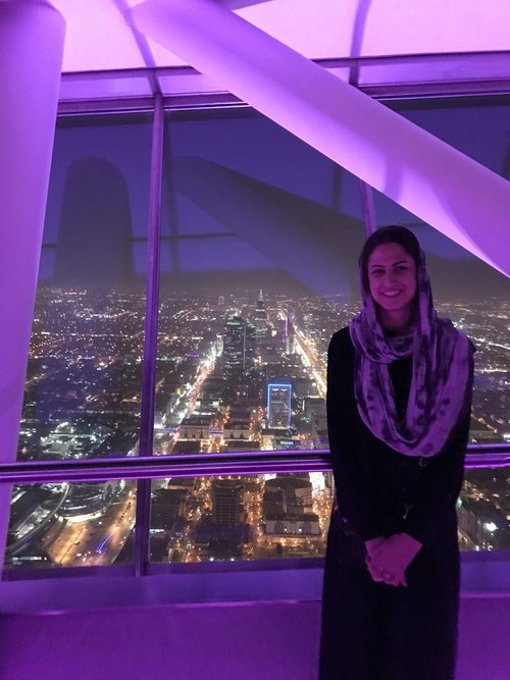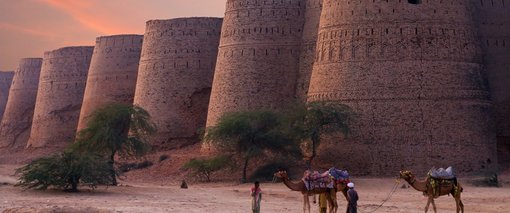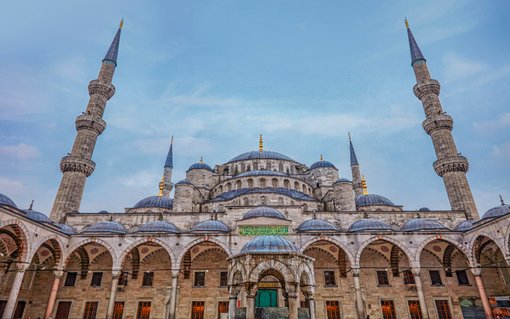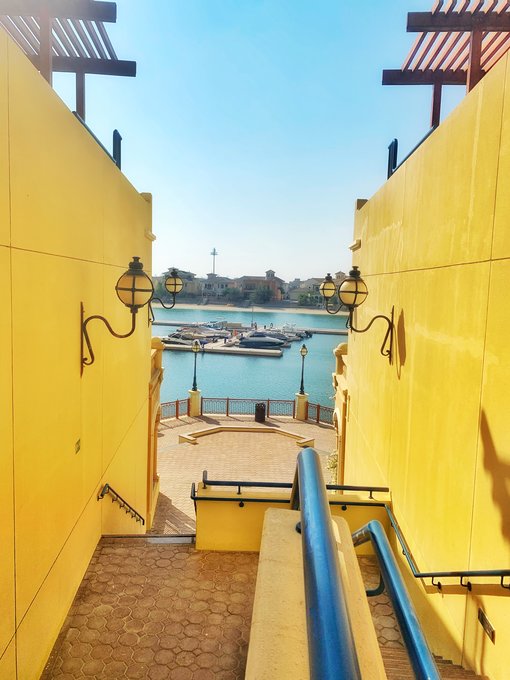Saudi Arabia - One of Travel's Last Forbidden Frontiers
Saudi Arabia, officially the Kingdom of Saudi Arabia (KSA), has been on the bucket list for a long time. Until very recently, it was only possible to visit on a business visa. And women weren't allowed to drive or travel unaccompanied. Tourist visas were finally issued in 2020 and the dress rules relaxed. Women given a little more freedom. And then came the Time of Covid, when all the visas were withdrawn. It's now open again and I'm lucky enough to be one of the first official tourists to visit. Though I'm also apprehensive. This country has one of the worst human rights records in the world.
The area that is modern-day Saudi Arabia formerly consisted of mainly four distinct historical regions: Hejaz, Najd and parts of Eastern Arabia (Al-Ahsa) and Southern Arabia. They were united by King Abdul-Aziz of the House of Saudi, in 1932. Saudi Arabia has since been an absolute monarchy, effectively a hereditary dictatorship, governed along Islamist lines.
Saudi Arabia spans the vast majority of the Arabian Peninsula. It is the biggest country in the Middle East, and the second-largest country in the Arab world (after Algeria). But most of its terrain consists of inhospitable arid desert, generally best avoided.
Contents
- Getting into Saudi Arabia
- Attempting to Explore Jeddah
- The Sights of Jeddah
- Al Balad - Jeddah
- Change in Saudi Arabia
- The Holy Cities of Saudi Arabia
- Medina
- The Al-Masjid an-Nabawi
- The Quba Mosque
- Mosque of the Two Qiblas
- Run out of Medina?
- Uhud
- Hejaz Railway
- Camel Burgers
- Khaybar
- Shaden Desert Resort
- AlUla
- AlUla Desert
- Eating and Drinking in AlUla
- A Journey in Time in Saudi Arabia
- Attempting to See Dedan
- Jabal Ikmah
- Elephant Rock
- Hegra, the First UNESCO Heritage Site Designated in Saudi Arabia
- Exploring Hegra
- Old AlUla
- Ha'il
- Hassle in Ha'il
- Jubbah
- Traditions of Saudi Arabia
- Nefud Desert, Saudi Arabia
- Hutamayah Crater
- Catastrophe in the Desert of Saudi Arabia
- Mussawakaf
- Buraydeh Camel Market
- Shaqra Heritage Museum
- Ushaiger Heritage Village
- The Edge of the World
- Riyadh, the Capital of Saudi Arabia
- Exploring Riyadh
- Saudi Arabia Summary
Getting into Saudi Arabia
The new tourist e-visa is fairly easily acquired. It turns up almost a soon as I've completed the online form and paid my money. The cost now includes mandatory Covid cover insurance. It's also compulsory to register vaccination status on the Muqeem Portal and download the Tawakkalna App which captures this status, tracks you and is a required passport to enter many buildings.
These two are a little more problematic, Google Chrome thoughtfully translates the Muqeem Arabic into English for me. Except it's not very accurate. The page is reversed – vaccinated visitor becomes 'dungeon visitor' and Jeddah (port of entry) becomes 'grandmother'. I revert to Firefox and manage to progress as required.
I'm stared at relentlessly on my flight from Bahrain, hair uncovered. But the reception in immigration is fast and friendly and there's no request to search my bags.
The Tawakkalna App can only be initiated properly on arrival. Which is fine, if your texts are switched on and the verification code arrives. Which mine doesn't. It doesn't like foreign phone numbers. I borrow his number from the nice man on hotel reception.
Attempting to Explore Jeddah
Saudi Arabia is the only country with a coastline along both the Red Sea and the Persian Gulf and Jeddah developed as a port on the Red Sea. As a result, it's the most multicultural, least conservative city in the country. So it's a good place to begin.
I'm expecting a walking tour of Jeddah, starting on the corniche. But the local motto is ‘Jeddah is different' and so is our tour.
Much of the land here is reclaimed and there are huge stretches of building site littered with cranes. But the work is literally ongoing and our guide Emad can't find a way though. We drive relentlessly up and down six-lane highways, the sea tantalisingly out of reach. I have a stream of photos of sculptures on roundabouts.
I can see pedestrian walkways and a gaily patterned bicycle lane winding alongside the corniche. No-one is using them, but then it is very hot - 35 degrees and more. There are a plethora of modern Moorish/Spanish style block hotels and malls chock full of designer shops. Sometimes it looks more like Florida than the Middle East. I think we've passed a branch of every American and British chain I've ever heard of. The Saudi economy (based on oil but now expanding into investment – Disney, Newcastle United (!) etc ) is the largest in the Middle East and eighteenth-largest in the world.
Up north, we stop at a building site. This is where they are planning to construct Al Walid, the tallest tower in the world. At a kilometre high it will outreach the Burj Khalifa in Dubai by 200 metres. At the moment, we have to use our imaginations.
The Sights of Jeddah
Back down south. We've been driving for an hour and a half now. Jeddah is sprawling, but it's also a case of déjà vu, déjà vu, déjà vu. Finally, a stop at the white, so called Floating Mosque. It's on reclaimed land, prettily situated on the bay.
Then, more six lane highways, further south to the Central Fish Market, on the main harbour. For the most part, this is manned by grinning Bangladeshi workers in uniform. Blue for stallholders and red for those washing and gutting the catch.
The white slabs are covered in gleaming fish of all hues and sizes. Emad takes our orders and we troop into a restaurant to feast on our selection. Lobster, popcorn shrimp, hammour and nagine. It's absolutely. delicious. We're eating in a new category of dining room. The Men with Foreign Women room. Emad stands guard while we go to the toilet.
Al Balad - Jeddah
More engaging, is the old historic centre of Jeddah, called Al Balad. The mud brick and coral houses, with their wooden balconies and ornate decorations are unique. They're also teetering and bulging dangerously. I wonder how many have collapsed. Sadly, they are being systematically torn down and rebuilt in the style of the originals. The area is a sea of hoardings and rubble.
Some of the original houses are museums, with cases full of fifties bric a brac and portraits of the Royal family to explore. We have to wait for prayers to finish before we can go in. Strong mint tea to drink on the roof of a tea house, with a great view of the carnage. Then through the souq here, endless rows of modern glass fronted booths punctuated with mosques so old they're ground floor is below street level.
Finally, the ethnographic Taibat Museum. Several floors of elaborately linked chambers with reconstructions of costumes and way of life from all areas of the country, even the Red Sea (lights, nets and stuffed fish). Pottery, artefacts and koranic texts. There are plenty of charming (if not exactly sophisticated) exhibits to see.
Change in Saudi Arabia
Emad points out the passing solo women in their cars. Women have only been allowed to drive for the last two years. Change is being expedited by the Crown Prince Mohammed Bin Salman (MSB) and is reported to be happening fast. Too fast for some of the older generation Emad says. Saudi Arabia has one of the world's youngest populations, with approximately 50 per cent of its population of 34.2 million under 25 years old. Emad isn't averse to moving with the times himself. He's actually a heart and lung surgeon who has worked at hospitals in both London and the States. He's now looking at a new career as a tour guide.
The Holy Cities of Saudi Arabia
The world's second-largest religion, Islam, emerged in the area known today as Saudi Arabia. In the early seventh century, the Islamic prophet Muhammad united the population of Arabia and created a single Islamic religious polity. Following his death in 632, his followers rapidly expanded the territory under Muslim rule beyond Arabia, conquering huge and unprecedented swathes of territory (from the Iberian Peninsula in the West to modern-day Pakistan in the East) in a matter of decades.
Saudi Arabia is sometimes referred to as "The Land of the Two Holy Mosques" in reference to Al-Masjid al-Haram (in Mecca) and Al-Masjid an-Nabawi (in Medina), the two holiest places in Islam. (Jerusalem is the third.) Mecca is reputedly the birthplace of the Islamic prophet Muhammad. The Hira cave atop the Jabal al-Nur (Mountain of Light) is just outside the city and is where Muslims believe the Quran was first revealed to Muhammad.
The Masjid al-Haram, is home to the Ka'bah (House of God), believed by Muslims to have been built by Abraham and Ishmael. Pre Islam it contained a back meteorite believed to be mystical and other pagan idols, but it was rededicated by Muhammed. This is Islam's holiest site and the direction of prayer for all Muslims (qibla), cementing Mecca's significance in Islam. Unbelievers are not allowed to visit Mecca and until recently have not been able to go to Medina either. We're told that things have now changed and today we're going to find out if this is true.
Medina
We're on the Haramain high speed (shinkansen style) train. The train links Medina and Mecca and the name means Double Haram -Two Cities. It was built for the pilgrims – ceremonial Hajj and less onerous Umrah involve visits to both This is an obligation for all able Muslims.
The journey to Medina is uneventful. The train is fast, on time and there is little to be seen through the heavily shielded widows. Now, for some reason, we have a 50 seater coach to accommodate our tour group of seven. I've got four seats to spread out my belongings. Medina is another cream city on a muddy sand backdrop, with a few scattered mountains as a backdrop. More renovation works. More diversions. We've now done so many U turns I've named our coach The Boris Bus.
The Al-Masjid an-Nabawi
We're circling the Al-Masjid an-Nabawi several times, until we're positively giddy, The minarets are tantalisingly glimpsed through fences and down side streets, as the driver stops to ask about the best route. Eventually, we stop just outside the enclosure and peep through the fretwork. Headscarves definitely required here. Just to make sure I've added a black bandanna face mask and sunglasses. Leader Steve, kindly says I look terrifying.
There are gorgeous intricate canopies, numerous glittering pillars and, to one side, the green dome of the holy mosque that contains Mohammed's body. Pilgrims stream in and out. ‘You're the first foreigners I've seen here in 20 years,' declaims a Pakistani guy. An excited Moroccan woman wants her picture taken with us. Sadly, the restaurants with views over the enclosure are closed, or so we're told. But we've already seen more than I had expected.
The Quba Mosque
Elsewhere, there are more diversions round construction and when we do arrive anywhere more often than not we have to wait whilst one of the mandatory prayer sessions finish. The Quba Mosque may be the first mosque in the world that dates to the lifetime of Muhammad in the seventh century. Its first stones were said to be positioned by Muhammad when he escaped from the city of Mecca. The escape in the year 622 AD is known as the hejira and is year 0 in the Islamic calendar. At that time Medina was known as Yathrib and was a Jewish settlement.
This mosque is believed to be where the first Friday prayer was held - led by Muhammad. According to Wikipedia, the Mosque of the Companions, which I saw in Massawa in Eritrea, is also a contender for oldest mosque. Whatever, Quba is an important and holy mosque. Offering prayers in the Quba Mosque is equivalent to performing one Umrah. After we've waited for prayers to finish (and Emad and the driver have disappeared to participate) we wander over the pigeon filled square to have a look We're the first non Moslem visitors ever, it seems. The door guardians are happy to participate in photographs, to celebrate this event, but the younger of them is fervent in his opposition to our entry and cannot be persuaded to so much as let us peek inside.
Mosque of the Two Qiblas
So, we're off to the Masjid al-Qiblatain or 'Mosque of the Two Qiblas', to try our luck again. This is believed to be the place where Muhammad received the command to change the Qibla (direction of prayer), from Jerusalem (as this is where Muhammed ascended to heaven) to Mecca. This mosque also dates back to ancient times. Sort of. It was built during the year 2 AH (623 AD), one of the few mosques in the world to have contained two mihrabs (niches indicating the qibla) in different directions. However, in 1987, during the reign of King Fahd, the mosque was completely torn down and rebuilt. The old prayer niche facing Jerusalem was removed, and the one facing Mecca was left.
We're hoping they will let us look inside here. But it's shut. Maybe they've been warned we're coming?
Run out of Medina?
The young man at the Quba Mosque has followed us, filming our departure and then phoned the tourism authority to complain about foreigners hanging around. No-one seems quite sure what to do with tourists in Medina. Our scheduled visit to the museum about Muhammed is off. Only pilgrims allowed. So is our traditional dinner. We've been confined to barracks. The tourist police inquire when we are leaving and are told, ‘Tomorrow'.
'Good', they reply.
Uhud
We chance our arm at one more stop on our way out of Medina. Uhud Mosque is built on the site of Muhammed's second battle, against the Meccans (there were three). Adjacent is the Hill of the Archers,– a crucial part of the battle plan. The archers were supposed to cover the rear, but they deserted their posts in search of booty and Muhammed was severely wounded.
There is a graveyard (tombs here are unmarked), adorned with lists of rules and exhortations from the ultraconservative Wahhabi religious movement within Sunni Islam. Wahhabi has been described as a "predominant feature of Saudi culture", although the power of the religious establishment has been significantly eroded in recent years. Everyone is climbing the hill, for the view, even though the sign forbids it. A police car is circling, but we depart Medina without any further drama.
Hejaz Railway
The desert road, the old Incense Route, leads north through anthracite coloured rocky dunes and low mountain ranges – this is volcanic territory. First stop is a Hejaz Railway station. This Ottoman railway, was built to bring pilgrims from as far away as Syria and is famous for T. E. Lawrence's sabotage attempts. Together with local tribesmen, he succeeded in disrupting services several times. I'm playing the Lawrence of Arabia them of course.
The station is fenced off, but there's a hole in the netting just big enough to crawl through. There are reconstructed wooden carriages attached to an old locomotive. And no-one appears to castigate us. On our perambulations round Medina we stopped at the terminus. Naturally, the museum there was closed for renovation.
Camel Burgers
Driver Omar is Syrian and is bemused by us tourists and the long route. His usual job is ferrying pilgrims on Umrah. He is not averse to long telephone conversations while he's driving the wrong way and struggling with Google and Emad's directions. He amuses himself the rest of the time by eating sunflower seeds, spitting or flicking the shells onto the coach floor.
Lunch is at Khaybar, a small desert town in a fast food meets traditional Arab joint, called King Camel. It's plate glass, metal railings and shiny scarlet carpet. It has ordering booths a la McDonalds. But we sit traditional style on the red plush and the food is placed on the floor on huge platters. Tender camel meat in a pilaff, and the usual dips and salads. And a chef cooking sweet and creamy rosewater soaked kanafa over flames. Our welcome from the local people continues to be both astonished and friendly. Steve is bemused and very touched to be given a watch by a young man insistent on rewarding him for bringing tourists to the country.
Khaybar
Khaybar was the scene of another ancient battle, this time between the Jews, who had introduced agriculture and ran the local date palmerie and the Moslems, led by Muhammed. The Jewish community were beaten and forced to agree to hand over half their annual profits. They were eventually totally ousted. We drive to see the old village on the site of the battlefield. A policeman arrives and tells us we cannot go in as the buildings are being renovated. There is no sign of any activity.
Plan B is to search out a viewpoint of the battlefield and the ruins of the Jewish Khaybar Fort, but Google fails to do the job again. After driving across rocky lava strewn desert for some time and past the ruined village three times it is agreed that we should give up and depart for our final destination, Al Ula.
Shaden Desert Resort
The sun has set when we arrive at the Shaden Desert Resort, but the illuminated formations in the gorge are a stunning welcome. The hotel spills along the narrow chasms - my home is a luxurious mock Bedouin tent. There's also a sundeck and swimming pool. Men only. Grrrr.
AlUla
The territory that now constitutes Saudi Arabia was the site of several ancient cultures and civilizations. The prehistory of Saudi Arabia shows some of the earliest traces of human activity in the world. AlUla is a good place to start looking. However, The Royal Commission has taken over tourism in the AlUla area and the itinerary is changing almost literally minute by minute. Emails are flying into Emad's phone. Steve flinches every time it pings.
AlUla Desert
This morning is billed as an exhilarating 4 WD ride through the canyons of the desert. Sure enough, we pile into Toyota Landcruisers. They've been restored and all the upholstery is covered with flapping plastic. And we proceed at leisurely pace. A stop for coffee by the road first. There is a little sedate off-roading to take in some more incredible rock formations. Mesas, buttes and hoodoos abound. Strung together like huge lines of pudding, dripping with sticky toffee. The highlight is The Rainbow, an arch that frames the landscape beautifully. The best view involves a scramble up some steep slopes and an inelegant slide down some shale. Then some more coffee.
A gap in a pair of giant rock pillars guarding the road. It's explained that a large camel belonging to one of the prophets on an expedition attempted to pass through the original narrow gap, which widened to allow passage. The poor animal was still ungratefully slaughtered for meat.
Eating and Drinking in AlUla
Then, an oasis farm and café with the usual Arab lounging area, the unusually spicy Arab coffee and dates of course. The owner has connections with the royal family and is wealthy enough to have her own menagerie as an added attraction. There are peacocks, bantams, a giant tortoise (relatively young at 38), goats, gazelles (just about visible with binoculars) and ostriches. We're told that another pen adjacent to the ostriches contains Australian ostriches. They look like emus to me.
And another café. This one is reached via a siq, a long chimney schism in the rock like the one at Petra. There's a sandy opening, surrounded by sheer rock face and yet more divans.
And now it's lunch. A palmerie, The Authentic Place, still more divans and carpets and succulent spicy chicken under the shade of the tall palms, the leaves cross-crossed above us. It would be a very pleasant place for a snooze before our planned stroll through the oasis. (What some exercise?). But the phone has pinged again. We're going to the ruins of Dadan.
A Journey in Time in Saudi Arabia
The cars take us back to the coach. The coach takes us to the ticket booth at the Winter Park. Then, we have to get on the official tourist bus to the Dedan ruins - ‘A Journey in Time'.( Well, it doesn't go for 45 minutes.) The commission are determined to provide the ultimate tourist experience. Take it or leave it.
I decide to go back to our coach to fetch my laptop and write up today's experiences whilst I'm waiting. ‘Knock on the back of the bus to wake up Omar', instructs Steve. So I do. Except it's the wrong bus and the wrong driver. When I do track him down, Omar is having a party on his own in our coach. Cooking on his gas stove, platters of dates and sweetmeats, smoking his shisha.
At least the wait gives us time to admire the rock formations. There are plenty of tall thin towers around this spot.
Attempting to See Dedan
Eventually arriving at Dedan we get to look at rock tombs from a great distance. The lion tombs are those belonging to the VIPs. We transfer to another bus then, to view what I think is called a sink. I haven't a clue. The explanation is incoherent and indistinct. From an even greater distance. It's dusk and hardly anything is visible now.
Then a bus journey of about 100 metres back to the entrance to Dedan. The guide (or rawi) suggests looking for more information on Goggle. So Google now has a new name. and this is what I've done.
‘Dedan was an ancient oasis city that was once the capital of one the oldest kingdoms of Arabia. It benefited from its strategic location along the ancient frankincense trade road between ancient Yemen and the Levant and the abundant underground water resources.
The historical importance of Dedan and the Dedanites goes back to the early 2nd millennium BC through the time of the Madianites, Dedan then became the capital of the Lihyan peoples between the mid-5th century BCE and the mid-4th century BCE (dates are still being debated by scholars). Although the Lihyanite kingdom took over the power in north-western Arabia they continued using the Dadanic script and language.'
I'm told that dwellings built more than 2 000 years are now visible. There's the remains of a palace and temples. Monumental statues four metres high. I'm unable to confirm this.
Jabal Ikmah
Yet another bus to the “open library” of inscriptions in the rocks at Jabal Ikmah dating back as far as 1000 BC. Except it's dark now and we can't see anything at all when we've clambered up the (many) steps. People are waving their phone torches around desperately. This is the only time each day they offer this tour at the moment. Mad.
Elephant Rock
I've read that Elephant Rock is iconic. I've been promised a visit there all day. It's best at night I'm told. There are lots of little cafes and it's lit up. We finally arrive and our entrance is barred. It's closed for renovations. It's just too frustrating for words.
I peep over the fence from the height of our coach…and that's it.
Hegra, the First UNESCO Heritage Site Designated in Saudi Arabia
I've been told to be ready outside my tent with my bags to be picked up by the golf buggy that goes between the tents and reception /restaurant. Naturally, it's 15 minutes late. I've decided to dub this The Sit Around in Saudi Tour. Today, we're visiting Mada'in Saleh or Hegra, the first UNESCO heritage site designated in Saudi Arabia. It's a Nabataean city, sister to Petra in Jordan. The Nabatean kingdom filled the gap between the Dedanites and the Romans, presiding over the Incense Route. A bus to the Hegra site. Another Journey In Time coach. We have to sit on it for over half an hour before it goes. 25 minutes to get to the site.
Exploring Hegra
Then another bus round Hegra. First stop is another siq at Jabal Ithlib. The sun lights the path just once a day giving rise to a so called mystical path. Close by is the Diwan, a meeting room in the rock - a place which hosted sumptuous banquets.
There are nearly 100 tombs to follow. We get a close up view of 18 of these at Jabal Al Ahmar. They have intricately carved entrances decorated with birds flowers and lions. Some of the eagles and urns are peppered with bullet holes. The Islamic extremists objected to the depiction of animal life. And others were just hopeful that there was gold in them there urns. They were disappointed.
The grand-daddy tomb further on is the isolated and unfinished monolith that is the burial place of Lihyan, Son of Kuza. It's sometimes referred to as the Lonely Castle and it features on all the posters. We troop around the canyons and rock faces. There's filming going on in front of one of the important tombs. We're forbidden to go there. But that's the only thing ruled out so far So we're doing quite well today. And it's a glorious setting presided over by a string of stunning hoodoos.
Old AlUla
Things have been going too splendidly. Emad is persuaded to abandon Tik Tok and phone around to find us somewhere to eat in AlUla. We follow a guide to the chosen restaurant to find a closed sign. We wonder who Emad called. Eventually, another traditional café is identified and we make our repast - chicken and rice (khabsa).
A stroll around the very newly renovated Old Town next. The main street is a string of modern stalls and cafes, with an Arab vibe. There's even a Dunkin Donuts. They front the 900 or so traditional Adobe dwellings that were old AlUla. The bulldozer is busy doing its work behind the hoardings, but there are plenty of ruined walls to be admired - a crenellated fort on a hill providing a suitable atmospheric backdrop. Or there would be if we bought a ticket and took a tour. Which would involve another Journey in Time bus back to where we are standing now. Fortunately, we spy a restaurant with a terrace and a cooperative waiter. So we get the view free.
Ha'il
Next, we set off for Ha'il. Somehow or other the journeys all seem to take much longer than expected. This is flat desert over a newly tarmacked and relatively quiet road. A few camels wander on the horizon.
Ha'il is a sprawling conurbation holding some 900,000 people. It's evolved as a caravan stop on the pilgrim route, the centre of the area once ruled by the House of Rashid, in north Najd. It was conquered by the Saudis and incorporated into one kingdom by King Abdul-Aziz in 1932.
Today, it's an agricultural area, with a couple of reconstructed forts, Arif and Qishlah. There are good views from Arif, where three of the group manage to get locked into a chamber, causing a few minutes consternation. And there's a cosmopolitan downtown area with the Barzan Souq that's gradually opening up after Thursday evening prayers. The shops are modern, concrete and plate glass, but there are the usual rows of overly bright blingy gold and perfume shops. Some specialise in the local favourite, oud – to burn or to spray, Groups of young women, eyes gleaming from behind their niqabs, call out welcomes and ask for selfies.
Hassle in Ha'il
It's a neon lit comfortable hotel with little atmosphere, especially in the rooms. It's typical, in Arab countries. Hot water is provided by individual water heaters. The green agenda isn't even in the planning stages here, it seems. I've not seen one solar panel, despite the relentless sun and searing heat of the desert. Plastic water bottles abound and are replenished by the half dozen. As fast as Steve encourages the use of refillable water bottles and tap water (which he assures us is perfectly safe) Emad emerges beaming, with more plastic bottles ,and distributes them around the bus. Cutlery nearly everywhere is plastic and here even the breakfast crockery is throwaway plastic.
Dinner in the Asian Feast hotel restaurant. The manager is attentive and tells me I need to re-register my room card, as it's been near my phone. No it hasn't, I think, but I go along with it, even though I can't remember my room number. Slight alarm bells are ringing, but I tell myself I'm just being paranoid. But no, half an hour later my door bell rings and he's there with a plate of fruit I haven't ordered. The chain's now across the door.
Jubbah
Just over an hour north of Ha'il is Jubbah, famous for its UNESCO designated rock art, spread over two sites at Jabal Umm Simmam. There are the usual proliferation of petroglyphs and inscriptions, dating back as far as 10,000 years. They depict camels, cattle, African mammals (which used to wander up this way), ostriches and an ancient king or two. Possibly more interesting are the very graphic Kama Sutra type scenes. We're not sure how old these are, but they are not referred to in any of the literature.
Traditions of Saudi Arabia
Another traditional Arab meal on another traditional estate. The words chicken and rice have become synonymous with lunch. As usual, we start in the lounge area or majis, where coffee (qahwah) is served. The custom is to have your teeny cup filled three times - just a sip each time - and then to shake it to show you have had enough. Coffee is always accompanied by dates. And sometimes it's followed by tea.
As usual, there's a tour to finish. In this case it's a look round the old high rooms, rafters burnt black by smoke. (Nevertheless, there's still a TV on the wall). Another little museum of 50s bric a brac. The piece de resistance is a working irrigation system. A pair of delightfully fluffy white camels in harness, stroll disdainfully up and down. This operates a series of pulleys, which enable two leather skins to scoop up water and cascade it into a channel.
Nefud Desert, Saudi Arabia
For me, the highlight of this day trip is the Nefud Desert scenery, as we wind through an apricot sand sea of small barkhans.
Dinner is khabsa - again.
Hutamayah Crater
The Hutamayah Crater is off the road to Buraydeh and near the small eerily quiet town of Tabah. But no-one is quite sure exactly where it is. Emad solicits directions and the coach lurches along a dirt track and into a low caldera, past an even more deserted village and a dilapidated date farm, before we decide we must be in the wrong place. Back to the main road and past a sign that indicates Volcanic Orifices. Ah that must be it. The coach creeps another long desert track, this time coming to a halt on the rim of a deep crater, veined with green swirls. There's a sparkling stretch of salt lake in the centre. It's impressive and deserves a circumnavigation. Though true to form on this tour the path at the far end disappears inland, covered in steep shale, and we have to do a U turn.
Catastrophe in the Desert of Saudi Arabia
Back to the bus. This time we have to reverse out and Omar attempts several times to turn the bus round. The last attempt results in catastrophe. The back wheels are firmly embedded in the sand. Emad has phoned his local friends, he says, who are sending a truck to tow us out. It's another long wait. We watch out for the clouds of dust that signal the arrival of vehicles. A friend of Emad's turns up first. with a pick up. and attempts to attach a rope. Whilst he is planning his rescue the local fire men (Civil Defence) arrive with a slightly bigger pick up (their trucks are lime green here), snort derisively at these puny efforts and elbow him out of the way. Tow rope in place they attempt to move forward. The rope snaps with a loud bang.
More of Emad's friends put in an appearance in assorted Landcruisers, leap out, dig for about 30 seconds and then stand round gossiping and drinking coffee. Time ticks by. Finally, John Wayne and the Second Cavalry to the rescue, as the back up to the Civil Defence team arrive. This time they have a super big proper fire engine tow truck. Finally, we're pulled out and on our way. The ultimate U Turn. It's more exciting than the rock art.
Mussawakaf
It's now mid afternoon on Friday and all the local restaurants are closed. We've missed out on our khabsa so we descend on a supermarket and fill up on coca cola, crisps and ice cream.
We're skirting Buraydeh, the capital city of the ancient province of Najd and heading to the souq at Mussawakaf. It's been rebuilt in traditional style with mud walls and triangular merlons up top and is utterly delightful. No-one seems to mind us wandering around with our cameras. There's an auction of car boot style items stacked on trestle tables in the centre. All men. There are also men dancing and manning other stalls, selling items like gas masks from the Iraqi war. Up the other end of this large open area are benches and tables with women and one or two families enjoying picnics. I'm plied with cakes and biscuits.
And then dinner at our hotel at Unayzah. It's khabsa.
Buraydeh Camel Market
Buraydeh is said to be the biggest camel market in the world. For my part, I've never before never seen so many camels (and goats and sheep). A heaving mass of animals winched in, flailing in the air, craning their necks for all the world like small dinosaurs, hobbled, squashed into cramped rows. The incessant bellowing. The indignity. The odd attempt to escape quickly curtailed by masters current and new, wielding their sticks. Red and white check cloth headed men weave in and out stern, proud, concerned as they buy and sell. The auctioneer's voice firm above the caterwauling of the beasts. Enthralling and disturbing. Poor camels.
Shaqra Heritage Museum
Half way to Riyadh from Buraydeh (if you drive the indirect route ) are the heritage museums of the twin towns -Shaqra and Ushaiger. Both were settled by Bedouins some 1500 years ago. Shaqra has a mud walled fort and several restored house, a mosque and a notable well. Both offer stunning examples of Najdi architecture, with its distinctive triangular windows and roofs, and ornately carved wooden doors. Some still bear the names of the families who lived there.
Ushaiger Heritage Village
Ushaiger became a popular stopping point for pilgrims crossing to Mecca, thanks to its springs and low-brimmed olive and palm groves. More rural than Shaqra, It's a living museum, draped with traces of an ancient way of life. Encased in thick mud walls, Ushaiger is a labyrinth of winding alleyways, shaded pathways and timber-framed walkways.
The Edge of the World
Our last stop for the day on our way to Riyadh is billed as a memorable sunset view from an escarpment. Except that Emad can't find the spot. We follow a road that peters out. The sun disappears behind the low dunes. There is no view. It's more the Edge of Reason than the Edge of the World.
Riyadh, the Capital of Saudi Arabia
Riyadh is the capital and largest city of Saudi Arabia. Emad says that the government's new plans for the future - Vision 2030 - hope to increase the population from 8. 5 million to 30 million as the countries economy diversifies. Petroleum was discovered in Saudi Arabia in 1938 and followed up by It has since become the world's second largest oil producer (behind the US) and the world's largest oil exporter. This is the only Arab country to be part of the G 20 major economies.
The Vision 2030 Homepage tells me that it is planned to expand the population to 15-20 million. It's still a huge increase. MSB wants Riyadh to one of the biggest city economies in the world and incorporates a greening programme into his vision. He says, ‘We also aim to have Riyadh become among the world's most prominent cities in terms of quality of life, tourism, and services in one way or another'. As you might expect Riyadh is a modern glitzy city, especially at night, when all the malls and scrapers are lit up.
Exploring Riyadh
A visit to the Al Masmak Palace Museum explains the history of the Saud empire and the establishment of the three Saudi states, the alter two founded from Riyadh. The storming of Masmak Fort in 1902 gave the Al Saud's control of Riyadh. Royal family portraits are proudly displayed. This was a residence of King Abdul Aziz.
The city wakes up slowly on a Sunday, the first day of the working week. It turns out that some things aren't open at all. The national museum was supposed to be the visit highlight. But it's closed. Some of the hoardings confirm this. 'We haven't changed the website yet', they admit. Though Google seems to know.
The adjacent Murabba Palace Museum is open, however. Abdul Aziz moved there from Al Masmak. The mud brick, white painted palace was the first building to be erected outside the walls of the old city. Between Al Masmak and Murabba is the huge Deera Square, affectionately known as Chop Chop Square. At unannounced times, police and other officials will clear the area to make way for public executions to take place.
The other highlight of Riyadh is the 302 metre-high Kingdom Centre, more colloquially known as The Bottle Opener. It has a slightly curved sky bridge connecting two towers: it's a weird sensation walking over it and gazing out. There aren't that many scrapers - Riyadh is another low beige city melding into the desert. It's walls were last demolished in the fifties, after being rebuilt several times.
Saudi Arabia Summary
This is a country which isn't quite sure if it wants tourists yet. There's plenty to see. Whether it's open when you get there, or you're allowed to enter is a different matter. Masks are currently mandatory in indoor public areas in theory, but in practice this rule is often not reinforced. The Tawakkalna App is also checked in theory, but in practice it's phenomenally difficult to activate. Besides, the person in charge of checking often gets bored after looking at the first couple or so and everyone else just troops in. Let's see if it all settles down as Vision 2030 develops.
An Nafud Middle East Train History Jeddah Medina Nature Culture Desert Geology Hegra Things to do Transportation Riyadh Food Guide Ha'il Jubbah Al-'Ula Architecture Mosque Saudi Arabia
Share this tip:
Written by suetravels
See also
Accommodations
Tours and activities
From BAHRAIN to SAUDI ARABIA by car (day tour)
We take you to a new adventure. From Bahrain to Saudi Arabia, driving through King Fahad Causeway 25 Km in the Gulf. With amazing drive crossing the Arabian Gulf. With unforgettable experience. A tour of two countries in one day.
What do we mean by saying “a journey to Armenia”? Walking in Yerevan? Or seeing Ararat? Or exploring Khachkars? Trying national food? Communicating with local people? Spending the night in a village house? Climbing mountains? Feeling the nature? The answer is very simple: all the above mentioned and even more.
